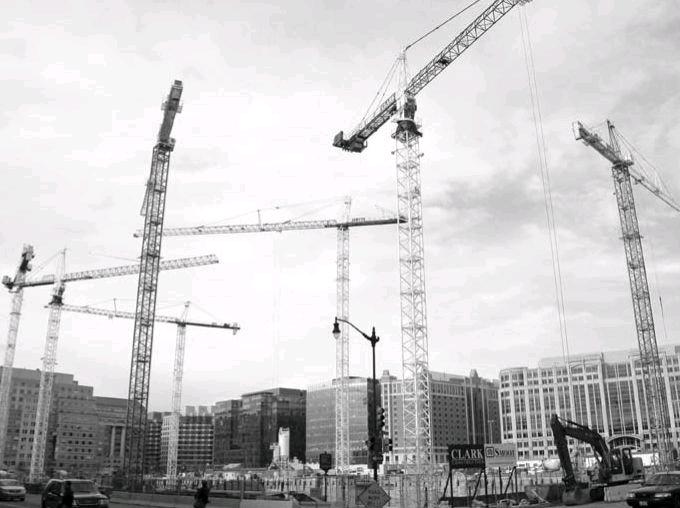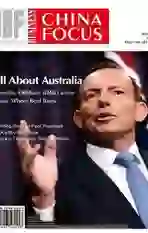New Urbanization Yearns for Capital
2014-09-22
As the peak of debt repay- ment by local governments approaches, a question rose as well: how can the local governments afford the massive investment into the new urbanization?
“We need nothing but the money,” said a governmental official from a province in West China. In his opinion, the finance and capital recruitment are two important paths. In the long term, the gate should be further opened to introduce all non-local capital, but the current key still lies with complete and well-aimed financial measures to activate the entire investment leverage.
In his opinion, the underperformance in capital recruitment is a result of the single fundraising channel. It is too costly and risky to let one local au- thority run the test of new fundraising measures. “We need the top-level design and guidance.”
NDBs Multi-billion Credit for Slum Reconstruction
Promoted by the campaign of new urbanization, it is very common for local governments to make massive invest- ments.
The 2014 International Forum for Urbanization of China ending April 20 unveiled the fact that National Development Bank (NDB) would lend out the loans of 100 billion yuan for the reconstruction of slums in different cities of China before the end of April. Meanwhile, NDB is going to increase the speed of setting up the department of housing finance and the establishment of the special funds for the development of urbanization.
This is definitely good news for the local governments which are holding grand plans of urbanization but have no source to raise enough capital the move the plans from paper to practice.
The capital is the engine of the project. It is also a chain around the projects to keep them from being initiated.
Zheng Zhijie, President of NDB, said: “various sources have shown that local governments are in great need of capital to initiate their projects.”
According to the 2014-2020 National Plan of New Urbanization (hereafter “Plan”for short), the proportion of permanent residents in cities should reach 50% by 2020 while 45% of the total population should have registered permanent residence after making around 100 million people from rural areas settle down in the urban areas.
How much money is needed for this goal?
Wang Baoan, Vice Minister of Finance, said in a public speech that the urbanization rate is expected to reach 60% by 2020 and such a goal needs 42 trillion yuan for fulfilling it. According to the estimation of NDB, the general demand for capital – from both investment and fundraising – for the urbanization amounts to 25 trillion yuan in the next three years.endprint
“This is just the capital that can be seen and calculated. Actually, it needs at least 50 trillion yuan to complete the goal,” said the aforementioned governmental official. Thats because the local governments have to pay back the old debts and make corrections to some of their actions in the new round of urbanization.
The long-time extensive development has run out the resources in many places. The most direct problem in front of local governments is the advent of the peak season for the return of local debts.
The financial research center at the Bank of Communications found that a wave of check-cashing of urban investment bonds, whose general sum is 350 billion yuan, already appeared and is to be there in 2014. March and April had the largest amount of bonds due. Mean- while, local governments have to face the stress of paying back their debts in due time.
Presently, local governments in China have the accountability to pay back the debt of 11.9 trillion yuan. 21.89% of them come due in 2014. The proportions in the following three years are respectively 17.06%, 11.58% and 7.79%. 18.76% of the debts come due in and after 2018.
An insider from the Reform and Development Commission of a city in a western province said that the expansionbased development of his city in recent years is actually a process of construction with every penny they can save. The urban reconstruction and some key projects are promoted based on five- or ten-year plan. Some of the plans even extend to 2020. This governmental official believes that this is a part of the new urbanization, but he also admits that the drastic increase in the spending on public services and social welfare will make the burden heavier.
Solutions Wanted for Fundraising Problems
In the second half of 2013, many cities or towns scrambled for the pilot areas for urbanization in order to win more policy and financial support. A source close to the decision-makers said that the central financial system mainly focused the investment on key projects.
Xu Hongcai, director of the Information Department at the China International Economic Exchange Center, said frankly that the financial power of the government had its own limit. If the progress of urbanization only depends on the governmental financial system, it means to relentlessly force the local gov- ernments to borrow the money blindly and cash out their future development potential. It is not sustainable and very risky.endprint

Xu Shaoshi, Director of National Development and Reform Commission, said that innovations were needed for the guarantee system for the urbanization. It is recommended to build a system that pegs the financial transfer payment to the urbanization of peasants, for the goal of matching the financial power of the urban governments with the public services. A transparent and regulated fundraising system for the urban investment structure should be built to improve the management over the issuance of local bonds. The continuous innovations to the fundraising tools are the key to attracting all social capital into the urbanization.
“NDB is now systematically working on the financing plan for the better of top-level design,” said Zheng Zhijie.
Chinese financial expert Chi Fulin said that it is a good thing if the central governments reformatory measures can make some breakthroughs in some of the fields. Among them, the acceleration in the reform to financial and tax system is an important step.
Ren Jinpeng, director of International Financial Forum, wrote an article, amplifying the necessity of diversifying the source of capital for urban construction.
In his opinion, if the market has not shown any real interest, it depends on the government-oriented fundraising. For example, the projects of metros and underground network construction, which usually have low investment returns, needs the governmental subsidies and government-based financial tools to collect the capital for the construction.
As for the projects with easyto-see and easy-to-get investment returns, the market force should be used. These industries mainly include the real estate, Smarter City, and environment-friendly projects and so on.endprint
